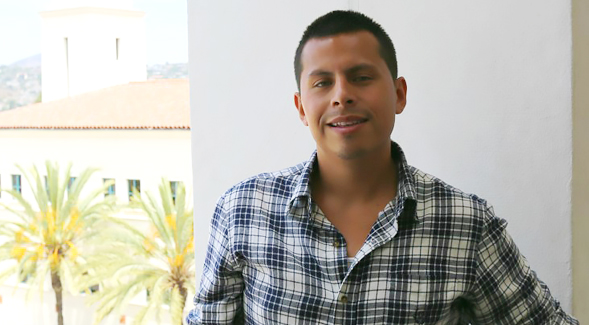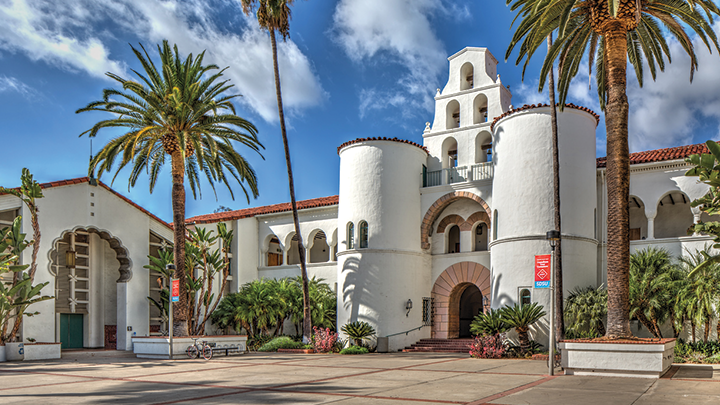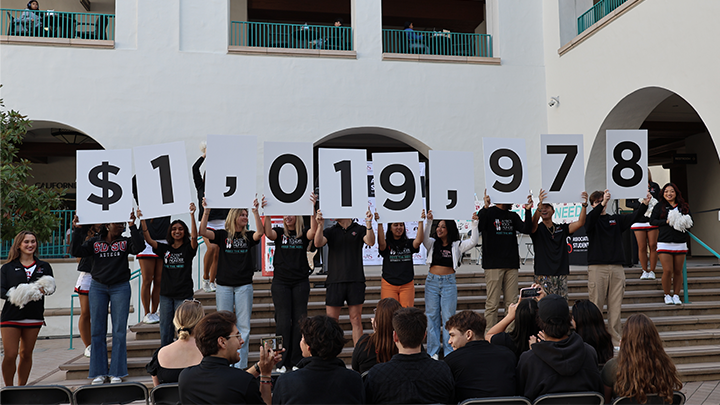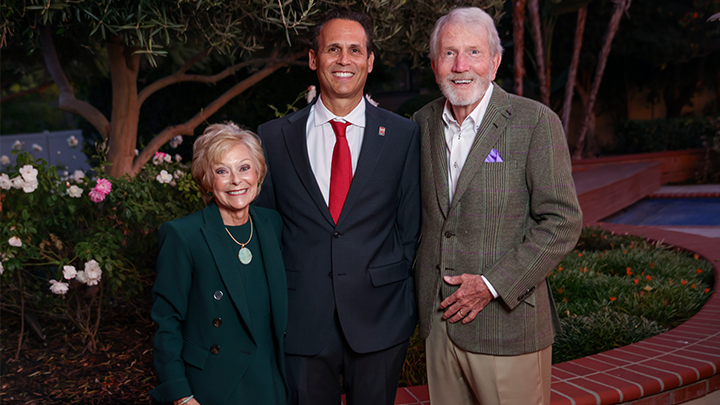Crossing Borders in Search of Answers
SDSU graduate student Derick Abrigus research aims to better inform public policy and perception by humanizing migrants.

Refugees are crammed into shelters along Mexico’s northern border. They are Mexican citizens recently deported from the United States, undocumented Central Americans and Haitian nationals who have found themselves stranded. All made a northward journey in search of opportunity in the United States, and now find themselves in difficult circumstances.“They have a simple message of hope and care that has made me a better person and motivates me to want to give back to them.”
As part of his studies at San Diego State University, Derick Abrigu regularly crosses the border into Tijuana to work with and learn from this vulnerable population.
During his visits, Abrigu, a dual master’s student in public administration and Latin American studies, immerses himself in the lives of these immigrants. He takes part in maintenance projects around the shelters and works with new arrivals; accompanying them to work or church or helping them complete legal papers needed for employment, citizenship and education.
But Abrigu is mostly there to listen. The immigrants tell him about the dangers associated with their ambiguous legal status. They tell him about the conditions of poverty and violence that led them to flee their homes in the first place. They also tell him about their expectations should they reach the United States.
Abrigu hopes their stories will ultimately result in positive change—both in policy and in the lives of these immigrants.
“Using the powerful message present in their narrative, I hope to challenge and better inform the existing immigration policy system, which fails to address the fundamental well-being of migrants and refugees,” Abrigu explains. “I also hope to stress the need for state and non-state actors to reconsider the role they play in identifying, protecting and serving this population.”
As an international student from Montreal, Canada, Abrigu is a recent arrival to the United States himself. And though he comes from the land just north, he feels a unique connection to the people he meets at the southern border—a connection that makes the immigrants more willing to open up and share their stories. Abrigu’s parents and much of his extended family were welcomed to Canada as asylum seekers in the 1970s, a time when their native Peru was roiled by violent political and social instability.
“I grew up in a generation where this was the reality of many of those around me,” Abrigu said. “Some failed and some succeeded, but their example of sacrifice left an imprint on me that I came to rediscover years later when I began to engage in fieldwork with migrants in Mexico. They have a simple message of hope and care that has made me a better person and motivates me to want to give back to them.”
Growing together
Coming to study in the United States as an international student—even from a country as culturally similar as Canada—presents a universal set of difficulties. Students often need to adjust to a new academic system, culture and surroundings. For Abrigu, that adjustment took on high stakes.After all, most SDSU international students don’t come with a family in tow.
For Abrigu, who arrived in San Diego in 2015 with his wife, Natasha, and one-month-old daughter, Natalia Alma, finding the right place to settle was a struggle for the first year. Fortunately, everything started to fall into place when they moved to Pacific Beach, where they have come to discover and appreciate the “West Coast vibe,” Abrigu said.
Recently, the Abrigus welcomed their first San Diego native to the family: their son, Santiago Antonio, was born this past winter. They are a truly international family; Natasha Abrigu is a Canadian of Italian descent, and the parents speak to their children in a mix of Italian, Spanish and English.
Work left to do
Prior to his time at SDSU, Abrigu was an undergraduate student at Concordia University in Montreal. There, he received research stipends that took him to central Mexico to study the dynamics of internal immigration and mobility. He spent time in immigrant shelters there and lived with the families left behind by immigrants seeking work in the United States.Now, as he continues his research here and works toward his thesis, he’s able to gain the perspectives of those who made the trek north. There is much left to be done, Abrigu said.
“The plight of the immigrant is greatly misconstrued by a combination of societal perception, state enforcement and outdated immigration policies,” he said. “The dynamic setting of the border region of San Ysidro-Tijuana exemplifies this in its purest form. There, we can witness the devastating human consequences of struggle, sacrifice and loss associated with forced displacement, but it is also a place where we can witness the human values of resilience and hope at its finest.”



